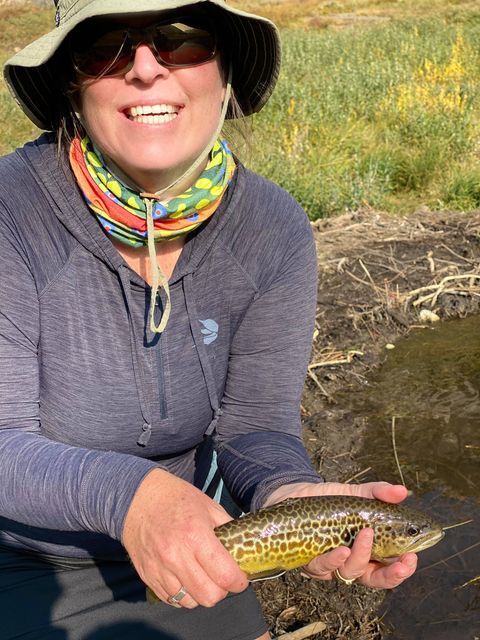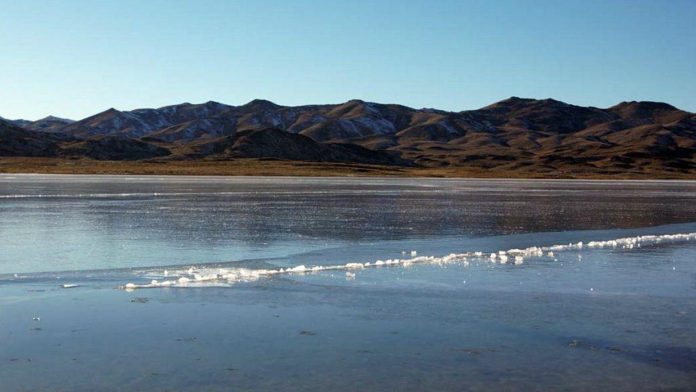This is a pressure ridge on early season ice that causes a weak spot that is very dangerous. There is open water where the ridge has separated as the day warmed up. If crossed early in the morning when it is closed, ice anglers may be stranded trying to get back to shore in the late afternoon.

Carrie Kidder of Hawaii shows off a tiger trout she caught on a recent trip to Lamoille Canyon. Tiger trout are a hybrid cross between brook trout and brown trout, both fall spawning fish. This is the time of year to target these beautiful trout.

Sergio Guzman taking fly fishing lessons from his son Aiden Guzman

Aiden Guzman with a nice fish he fought on his fly rod
Last week we talked about ice thickness and what is safe and what is not. Obviously, there are anglers in the area who don’t read this column, like to live dangerously, and they were ice fishing this past week on Wildhorse.
As stated last week, the most dangerous times to be on the ice is early in the ice season (now) or late in the ice season (spring) when ice conditions can change very quickly. What I failed to mention is that not only can it change daily with weather conditions, but the thickness can vary depending where upon the lake you are. In some cases, ice can be four inches thick in one spot and just a few feet away it may be only one or two inches.
With a lack of snow on the ice to insulate it, pressure ridges can become very dangerous spots on the lake. During the day as it warms up with the sun beating on it, ice starts to melt and contrary to what we may think, it contracts. At night when it gets very cold the ice expands, causing cracks that buckle, making the pressure ridges.
These pressure ridges become weak spots on the ice and should be avoided, especially when the ice is thin early in the season. The cracking along the ridge weakens it considerably for several feet on either side of the ridge. During the day, some even open, causing gaps between two sheets of ice that you can fall through.
Moral of the story is that the ice on Wildhorse Reservoir is unsafe at this time. If the snow predicted for the area next week comes to fruition, and the cold nights continue, it should be safe for ice fishing sometime around the week of Christmas. South Fork ice probably won’t be safe until after New Year’s.
Credit: Source link





























